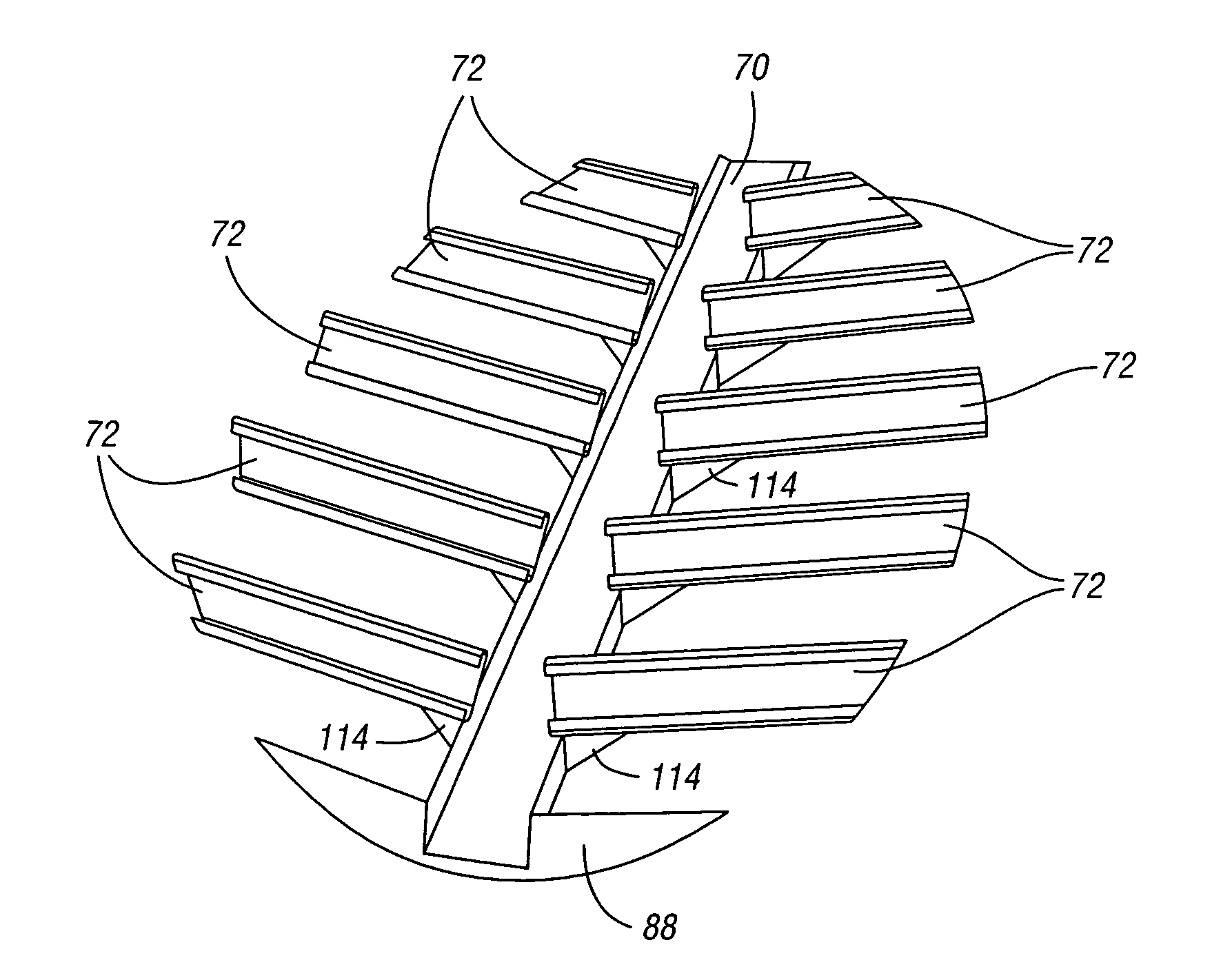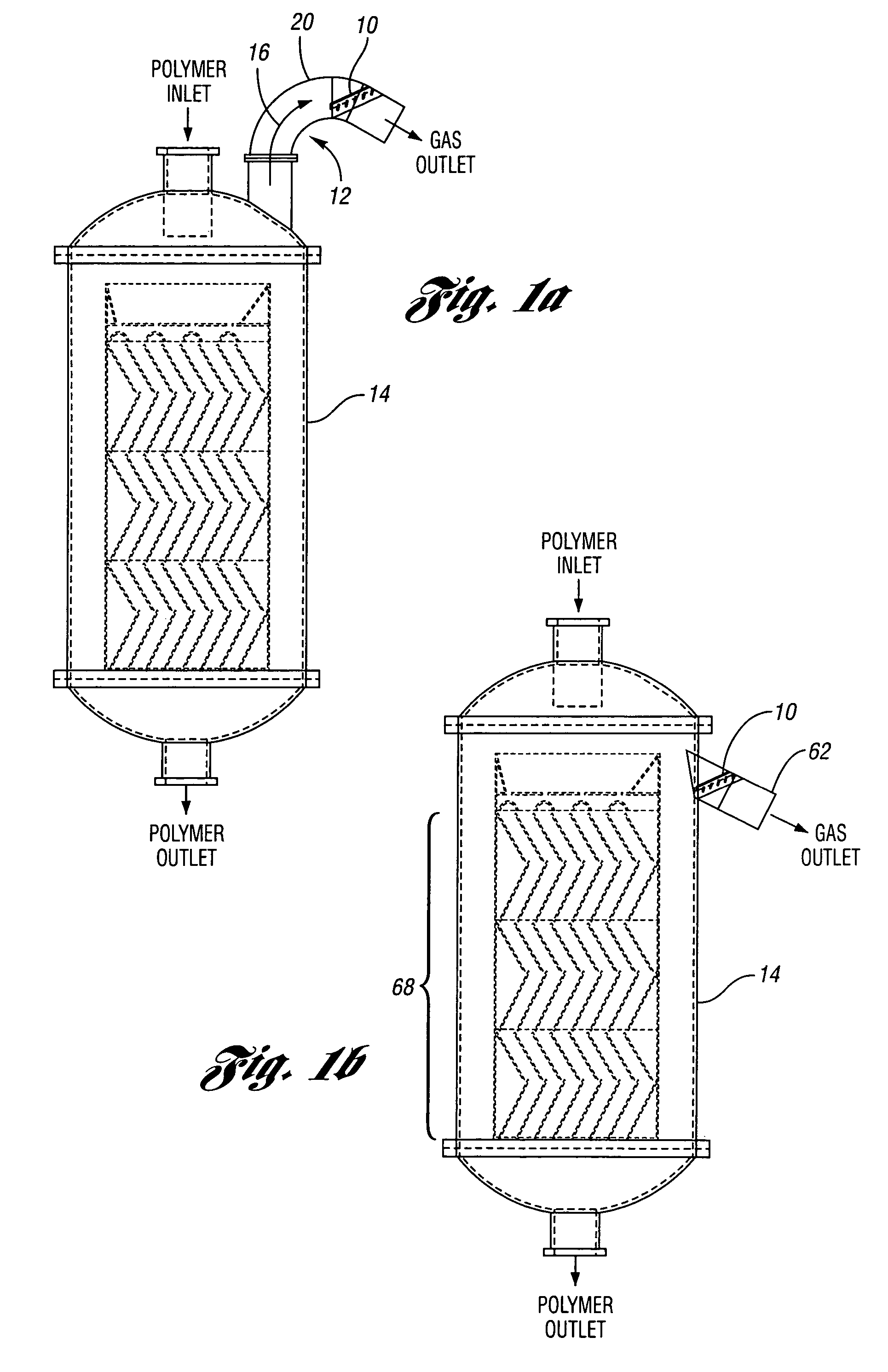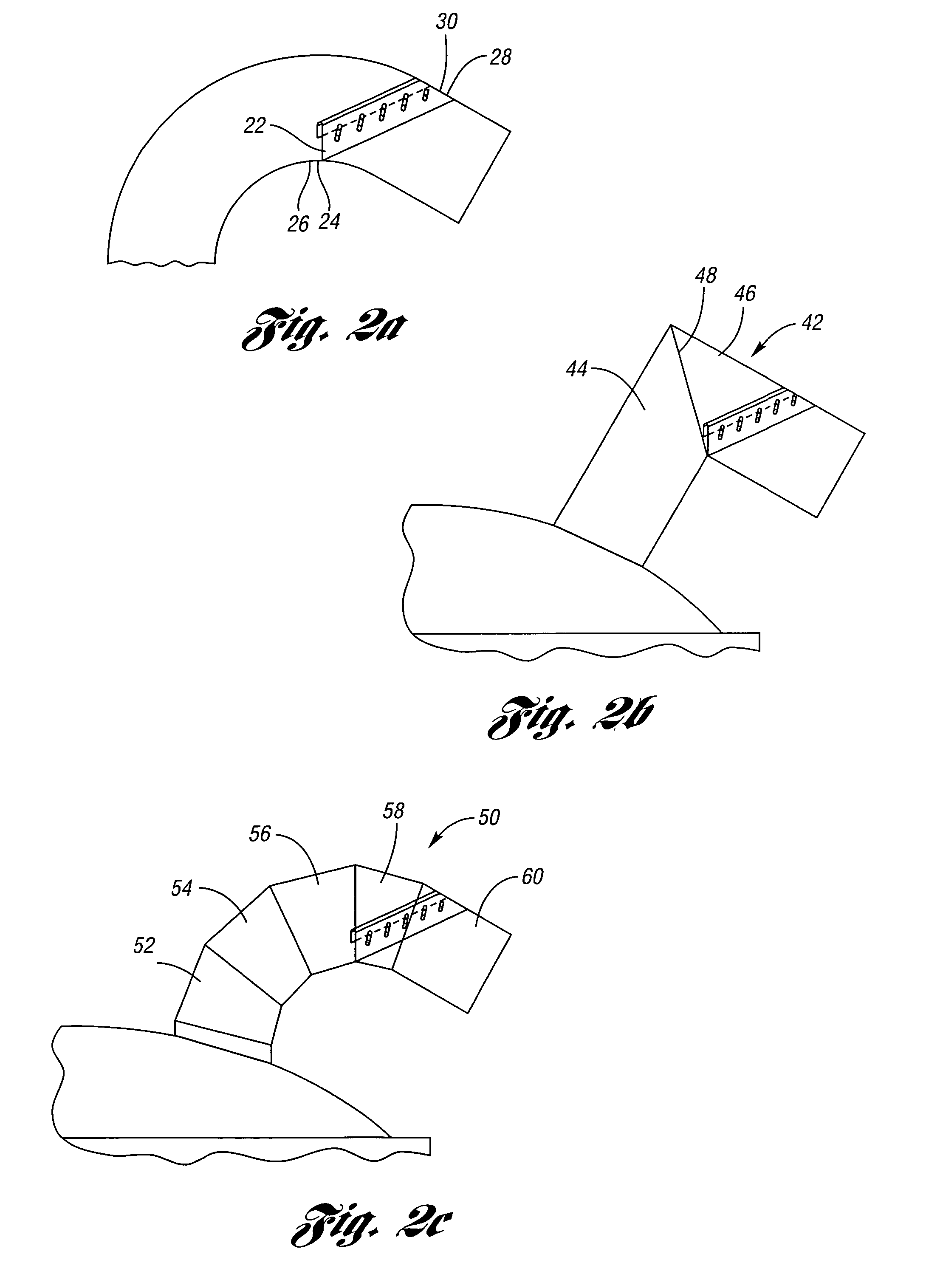Gas-liquid impingement separators
a separator and gas liquid technology, applied in the direction of separation process, auxillary pretreatment, dispersed particle separation, etc., can solve the problems of high energy consumption, severe pressure drop, and liquid droplets that may constitute a loss of valuable reactants
- Summary
- Abstract
- Description
- Claims
- Application Information
AI Technical Summary
Benefits of technology
Problems solved by technology
Method used
Image
Examples
Embodiment Construction
)
[0037]Reference will now be made in detail to presently preferred compositions or embodiments and methods of the invention, which constitute the best modes of practicing the invention presently known to the inventors.
[0038]With reference to FIGS. 1A and 2A, a first embodiment of the gas-liquid separation enhancer (i.e., the gas-liquid separator) of the invention is provided. FIG. 1A provides a side-view of the separation enhancer placed within the exit region of an elbow of a reactor conduit. FIG. 2A is a magnified view of the side-view of FIG. 1A. Gas-liquid separation enhancer 10 is positionable in conduit 12 for separating liquid from a stream having gas and liquid droplets emanating from process vessel 14. Typically, conduit 12 has a circular cross-section although other shapes are possible. The stream flows through conduit 12 in flow direction 16 which leads away from process vessel 14. In some variations of this embodiment, process vessel 14 is a polymerization reactor such a...
PUM
| Property | Measurement | Unit |
|---|---|---|
| angle | aaaaa | aaaaa |
| angle | aaaaa | aaaaa |
| force | aaaaa | aaaaa |
Abstract
Description
Claims
Application Information
 Login to View More
Login to View More - R&D
- Intellectual Property
- Life Sciences
- Materials
- Tech Scout
- Unparalleled Data Quality
- Higher Quality Content
- 60% Fewer Hallucinations
Browse by: Latest US Patents, China's latest patents, Technical Efficacy Thesaurus, Application Domain, Technology Topic, Popular Technical Reports.
© 2025 PatSnap. All rights reserved.Legal|Privacy policy|Modern Slavery Act Transparency Statement|Sitemap|About US| Contact US: help@patsnap.com



